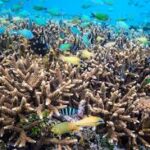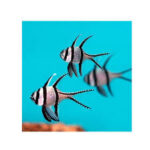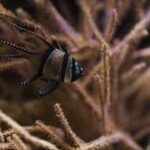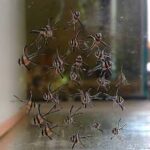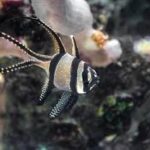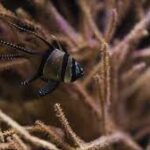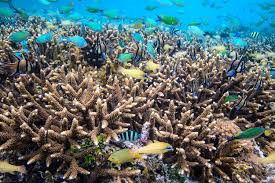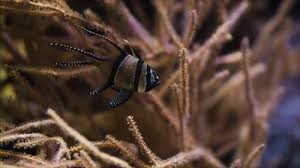
**Introduction to Pest and Disease Management in Chamomile Farming:**
Chamomile cultivation, cherished for its aromatic blooms and therapeutic properties, is susceptible to various pests and diseases that can affect plant health, yield, and quality. Implementing effective pest and disease management strategies is essential for safeguarding chamomile crops and ensuring sustainable production practices. This article delves into the intricacies of pest and disease management in chamomile farming, discussing integrated pest management (IPM) techniques, cultural practices, biological controls, and sustainable approaches to minimize pest and disease pressures and optimize crop health and productivity.
**Integrated Pest Management (IPM) Approaches:**
Integrated pest management (IPM) integrates multiple pest control tactics, including cultural, biological, physical, and chemical methods, to manage pest populations while minimizing environmental impacts and risks to human health. In chamomile cultivation, IPM strategies focus on preventive measures, monitoring pest populations, and employing targeted interventions to mitigate pest damage. Cultural practices such as crop rotation, sanitation, and weed management help reduce pest pressure and disrupt pest life cycles. Regular monitoring of chamomile fields for pest activity and disease symptoms allows growers to make informed decisions about pest control measures, such as the timing of pesticide applications or the deployment of natural enemies.
**Biological Control Agents:**
Biological control agents, including predatory insects, parasitic wasps, and microbial pathogens, offer sustainable alternatives to chemical pesticides for managing pest populations in chamomile crops. Predatory insects such as ladybugs, lacewings, and predatory mites feed on aphids, thrips, and other soft-bodied pests that infest chamomile plants, helping to keep pest populations in check. Parasitic wasps, such as Aphidius colemani and Encarsia formosa, parasitize aphids and whiteflies, providing natural pest control in chamomile fields. Microbial agents such as Bacillus thuringiensis (Bt) and Beauveria bassiana target specific insect pests while minimizing harm to beneficial organisms and the environment.
**Cultural Practices for Pest and Disease Management:**
Cultural practices play a critical role in preventing and managing pests and diseases in chamomile cultivation. Practices such as crop rotation, intercropping, and companion planting disrupt pest life cycles, enhance biodiversity, and promote natural pest control mechanisms. Selecting disease-resistant chamomile varieties and planting them in well-drained, sunny locations with good air circulation reduces the risk of fungal diseases such as powdery mildew and damping-off. Proper irrigation practices, such as drip irrigation or furrow irrigation, help maintain soil moisture levels and reduce water stress, which can make plants more susceptible to pests and diseases.
**Chemical Control Measures:**
While chemical pesticides should be used as a last resort in chamomile farming, they can be effective tools for managing severe pest infestations or disease outbreaks. However, it is essential to use pesticides judiciously and follow integrated pest management principles to minimize environmental impacts and risks to human health. Selective pesticides targeting specific pests, such as neem oil for aphids or spinosad for caterpillars, can help control pests while preserving beneficial insects and pollinators in chamomile fields. Additionally, rotating pesticide modes of action and adhering to label instructions regarding application rates, timing, and safety precautions are essential for minimizing pesticide resistance and environmental contamination.
**Conclusion:**
Pest and disease management in chamomile cultivation requires a holistic approach that integrates multiple control tactics and emphasizes prevention, monitoring, and ecological balance. By adopting integrated pest management (IPM) strategies, implementing cultural practices, utilizing biological control agents, and using chemical pesticides judiciously, growers can effectively manage pest and disease pressures while promoting sustainable production practices and preserving ecosystem health. Continued research and innovation in pest management techniques will further enhance the resilience and sustainability of chamomile farming systems, ensuring the continued success of this valuable crop for generations to come.
**Advanced Strategies for Pest and Disease Management in Chamomile Cultivation**
**Biological Control Enhancements:**
Expanding the use of biological control agents and enhancing their efficacy can significantly improve pest management outcomes in chamomile farming. Integrated pest management (IPM) programs can incorporate augmentative releases of beneficial insects and microbial agents to suppress pest populations and reduce reliance on chemical pesticides. Mass rearing facilities for predatory insects and parasitic wasps enable growers to obtain high-quality biological control agents for inoculative releases in chamomile fields. Furthermore, research into novel biopesticides, such as entomopathogenic fungi and nematodes, offers promising alternatives for targeting specific pests while minimizing environmental impacts and preserving natural enemy populations.
**Precision Pest Monitoring Technologies:**
Advances in precision agriculture technologies, such as remote sensing, unmanned aerial vehicles (UAVs), and sensor networks, enable growers to monitor pest populations and disease outbreaks with greater accuracy and efficiency. Remote sensing platforms equipped with multispectral and hyperspectral imaging sensors can detect subtle changes in plant health and identify pest infestations or disease symptoms before they become visually apparent. UAVs equipped with high-resolution cameras and thermal imaging sensors allow for aerial surveillance of chamomile fields, enabling rapid detection and targeted management of pest and disease hotspots. Sensor networks deployed throughout chamomile plantations provide real-time data on environmental conditions, pest activity, and crop health, enabling growers to make timely decisions about pest control interventions and optimize resource allocation.
**Host Plant Resistance and Genetic Improvement:**
Breeding chamomile cultivars with enhanced resistance to pests and diseases offers a sustainable long-term solution for managing pest pressures in chamomile cultivation. Genetic improvement programs focus on identifying and selecting chamomile germplasm with natural resistance or tolerance to common pests and diseases, such as aphids, spider mites, and powdery mildew. Marker-assisted breeding techniques facilitate the introgression of desirable traits, such as pest resistance genes or increased levels of secondary metabolites with insecticidal or antimicrobial properties, into elite chamomile breeding lines. Genomic selection approaches enable breeders to accelerate the development of pest-resistant chamomile varieties with improved agronomic performance and marketability.
**Microbiome Engineering and Soil Health Management:**
Harnessing the beneficial microbes present in the chamomile rhizosphere and phyllosphere offers innovative opportunities for enhancing plant health and resilience to pest and disease pressures. Microbiome engineering techniques, such as microbial inoculation, biofertilization, and soil amendment with compost or organic matter, promote the proliferation of beneficial microbes and suppress the growth of pathogenic organisms in chamomile cultivation. Beneficial microorganisms, such as mycorrhizal fungi, rhizobacteria, and endophytes, establish symbiotic relationships with chamomile plants, enhancing nutrient uptake, root development, and systemic resistance to pests and diseases. Soil health management practices, such as conservation tillage, cover cropping, and organic soil amendments, promote a balanced soil microbiome and create a supportive environment for chamomile growth, reducing the incidence of soilborne diseases and enhancing overall crop resilience.
**Conclusion:**
Implementing advanced strategies for pest and disease management in chamomile cultivation requires a proactive and multidisciplinary approach that integrates cutting-edge technologies, ecological principles, and genetic improvement techniques. By enhancing biological control mechanisms, leveraging precision agriculture tools, breeding resistant cultivars, and promoting soil health management practices, growers can effectively mitigate pest pressures, minimize disease risks, and optimize chamomile crop performance in a sustainable and environmentally friendly manner. Continued research, innovation, and collaboration among researchers, growers, and industry stakeholders are essential for developing and disseminating best practices for pest and disease management in chamomile farming, ensuring the long-term viability and profitability of this valuable crop.
